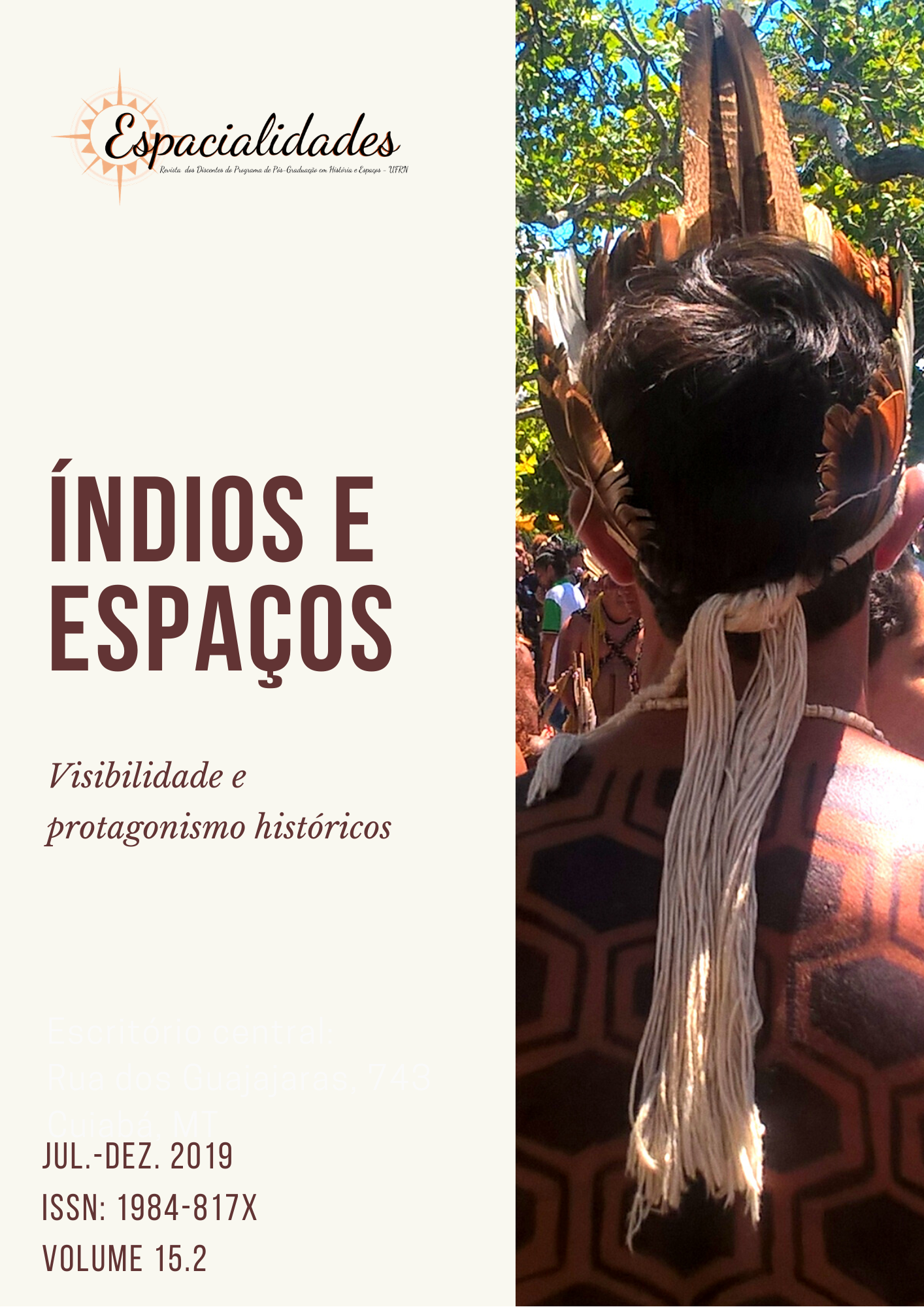Caminhos Indígenas
espaços de movimentação pela Amazônia
DOI:
https://doi.org/10.21680/1984-817X.2019v15n02ID19525Palavras-chave:
Caminhos indígenas, Mobilidade, Interflúvios, Percepção Espacial, AmazôniaResumo
Esse artigo visa, por meio de exemplos históricos e etnográficos, tentar compreender a forma como os indígenas na Amazônia constroem as experiências espaciais na floresta percorrendo os caminhos. Muitos estrangeiros penetraram a Amazônia seguindo os cursos dos rios principais, pouco podendo informar sobre o espaço dos divisores de águas que se estendem entre os rios. Para isso, foi necessário se deixar levar por guias, intérpretes e remeiros indígenas (Kok, 2009; Roller, 2012) que conheciam a movimentação pelos caminhos na floresta. Baseado em Ingold (2000; 2010) comparo que enquanto a experiência de caminhar na floresta sempre foi parte integral da vida dos povos indígenas; para quem penetrou a selva vindo de fora, a floresta foi vista de modo utilitário, como caminhos a serem abertos e distâncias superadas.
Downloads
Arquivos adicionais
Publicado
Como Citar
Edição
Seção
Licença
A submissão de originais para este periódico implica na transferência, pelos autores, dos direitos de publicação impressa e digital. Os autores mantém os direitos autorais e concedem à revista o direito de publicação inicial, com o trabalho simultaneamente licenciado sob a Licença Creative Commons CC BY-NC- SA 4.0, e pelos direitos de publicação. Os autores podem publicar seus trabalhos on-line em repositórios institucionais / disciplinares ou nos seus próprios sites. Os autores somente poderão utilizar os mesmos resultados em outras publicações indicando claramente este periódico como o meio da publicação original.
O autor também aceita submeter o trabalho às normas de publicação da Revista Espacialidades acima explicitadas.
A Revista Espacialidades é um periódico de acesso aberto sob a licença Creative Commons Attribution-NonCommercial-ShareAlike 4.0 Internacional License (CC BY-NC-SA 4.0)




